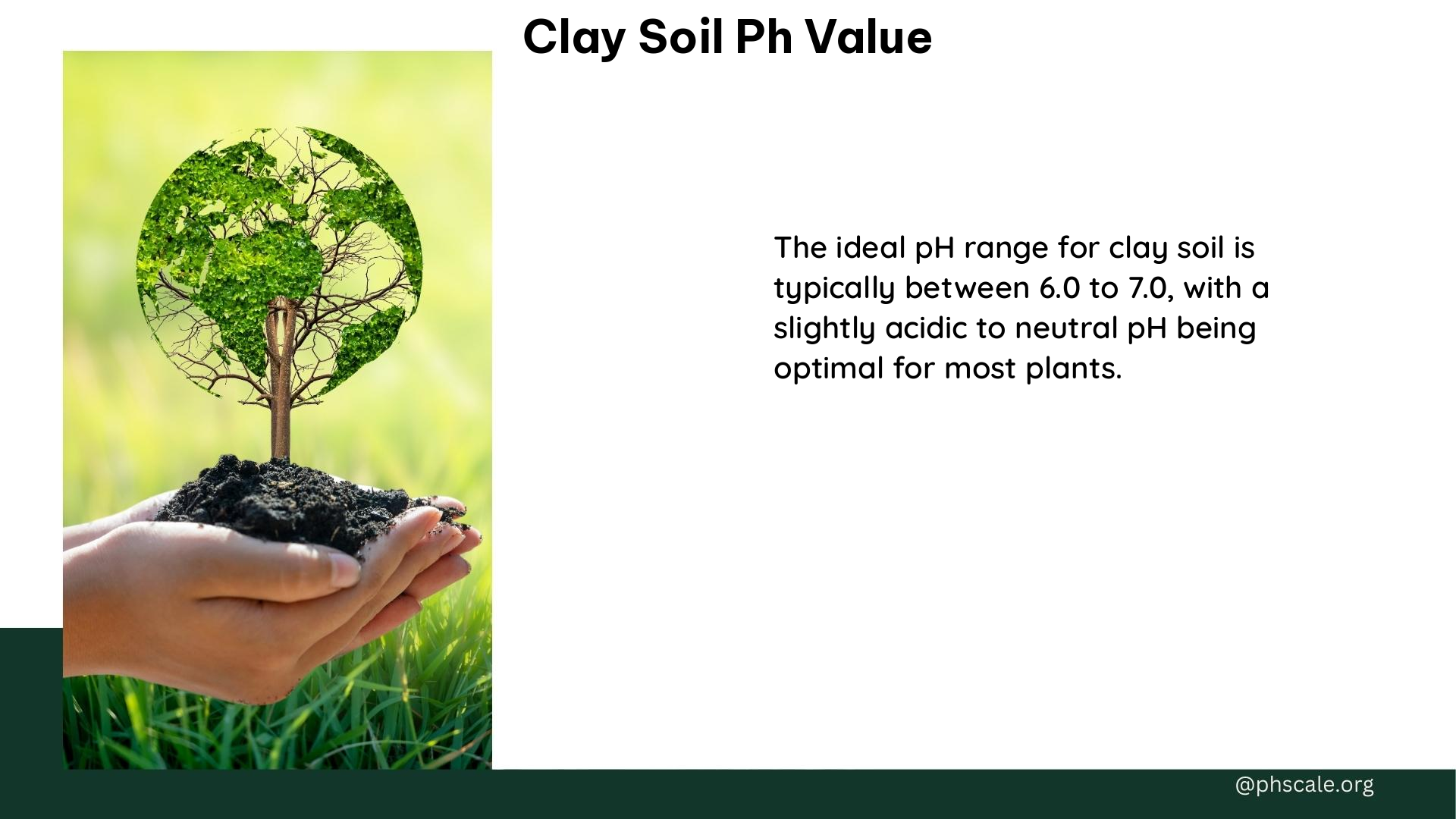The pH value of clay soil is a crucial factor in determining the overall health and productivity of your garden or landscape. Clay soils, known for their dense and compact nature, can present unique challenges when it comes to maintaining the optimal pH range for plant growth. In this comprehensive guide, we’ll explore the intricacies of clay soil pH, its impact on plant performance, and practical strategies to manage and optimize the pH levels in your clay-based soil.
Ideal pH Range for Clay Soil
The pH value of clay soil can range from 5.0 to 7.5, with the ideal range for most vegetables falling between 6.5 and 7.0. This slightly acidic to neutral pH range is essential for the proper uptake of essential nutrients by plants, ensuring their overall health and vigor.
Adjusting pH Levels in Clay Soil

Adjusting the pH levels in clay soil can be a delicate process, as the soil’s composition and organic matter content can significantly influence the required amendments. Here are some effective methods to adjust the pH in clay soil:
Raising pH Levels
To increase the pH and make the soil more alkaline, you can add ground limestone or dolomite to the soil. The amount needed will depend on the initial pH level and the organic matter present. As a general guideline, if the pH is between 5.5 and 6.0, you can add approximately five pounds of limestone per 100 square feet of soil.
Lowering pH Levels
If the clay soil is too alkaline, you can lower the pH by incorporating elemental sulfur or acidifying fertilizers like ammonium sulfate. Again, the specific application rate will depend on the starting pH and the soil’s characteristics.
Dealing with Contaminants and Chemicals
Clay soil can be prone to compaction and may contain various contaminants, including heavy metals. To address these issues and improve the overall soil structure and fertility, consider the following strategies:
- Organic Matter Addition: Incorporate organic matter, such as compost, into the clay soil. This can help balance the pH, improve drainage, and provide essential nutrients for plant growth.
- Regenerative Practices: Adopt regenerative gardening techniques, such as no-till methods and cover cropping, to enhance the soil’s structure and microbial activity.
- Calcium Amendments: Adding calcium-rich amendments, like gypsum or lime, can help soften the clay soil and make it more manageable.
Home Remedies and DIY Solutions
Adjusting the pH of clay soil can be a straightforward process with the right tools and knowledge. Here are some DIY solutions to consider:
-
pH Testing: Use pH test strips or soil testing kits to determine the current pH level of your clay soil. You can also consult with local university extensions or conservation districts for professional soil analysis.
-
Raising pH: Apply ground limestone or dolomite to the soil according to the manufacturer’s instructions or based on the recommendations from your soil test results.
-
Lowering pH: Use elemental sulfur or acidifying fertilizers, such as ammonium sulfate, to lower the pH level of the clay soil.
-
Improving Soil Structure: Incorporate organic matter, such as compost or well-rotted manure, to enhance the texture and fertility of the clay soil.
By understanding the importance of clay soil pH and implementing the appropriate strategies, you can create a thriving garden or landscape that is well-suited to the unique characteristics of your clay-based soil.
References
- https://www.lovetoknow.com/home/garden/preparing-clay-soil-gardening
- https://www.youtube.com/watch?v=GmmLU38KlRg
- https://www.cumminsnursery.com/learn-trees/growing-trees/preparation/soil-ph-clay-amendation-fertility
